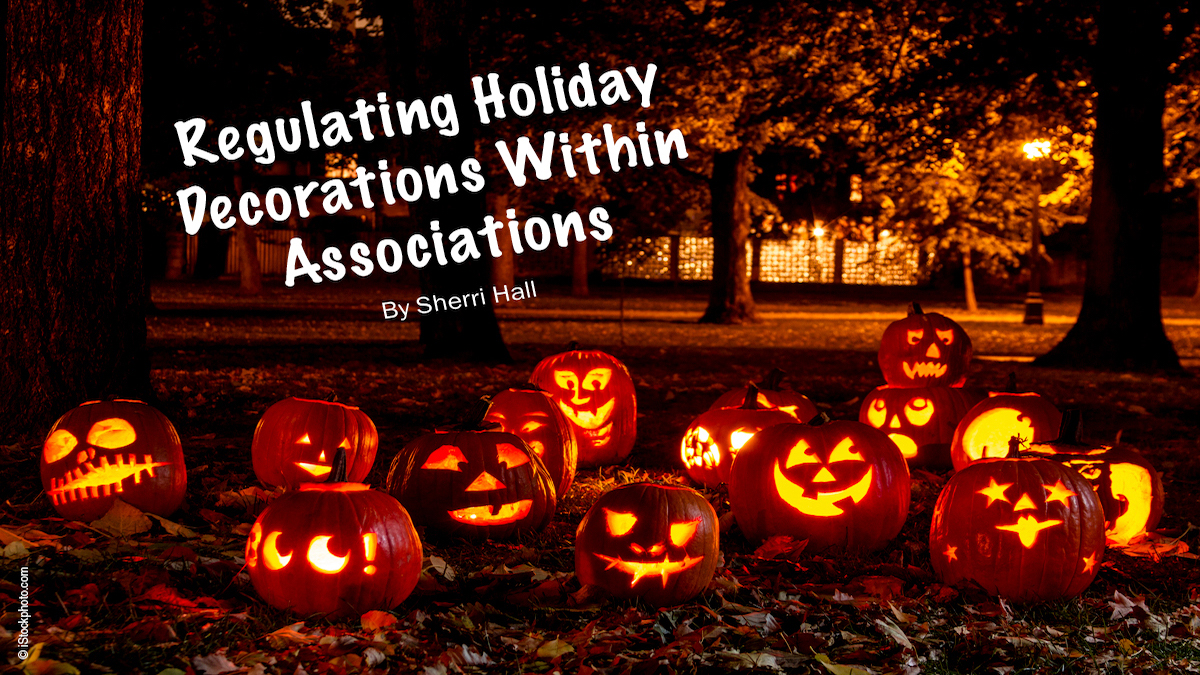
Regulating Holiday Decorations Within Associations
Feature Story
Regulating Holiday Decorations Within Associations
As Halloween approaches, followed by the winter holidays shortly thereafter, associations should ensure that policies regarding holiday decorations are in place for residents to follow. Such rules must be reasonable, and more importantly, legal.
However, when setting the rules regarding holiday decorations, associations must take certain precautions, said Attorney David Byrne, of Ansell Grimm & Aaron, PC in Princeton, New Jersey. “A general rule is to focus on the owners’ decoration conduct, not the decoration itself. Associations can get themselves into trouble if they focus on the particular type of decoration as opposed to simply the existence of it,” Byrne explained.
Additionally, associations can also face negative consequences when they assume they have certain rights to regulate holiday decorations. Associations don’t always have those rights. For example, associations may think they are able to levy fines for violations or remove unauthorized decorations themselves. Before they go ahead and take such steps though, they should be sure. Therefore, associations should research relevant statutes in their particular state, as regulations vary from state to state, said Byrne. He also suggested they review their declaration and bylaws as well as consult with an attorney who would be familiar with relevant cases.
In addition to ensuring their rules are legal, associations should set a standard of reasonableness for these regulations. The standard of reasonableness will depend on different situations and the statutes within each state, Byrne noted.
With regard to the enforcement of such regulations, this also depends on the statutes in each state and the association’s declaration and bylaws, said Byrne who added that associations should analyze these things before taking steps to enforce the rules. An association’s rights could potentially include levying fines, removing the decorations themselves or getting a court order to do so. Associations should ensure they have the right to recover any attorney fees expended with respect to any legal action. “If a board thinks it’s going to get its legal fees back, it might be more likely to try to enforce the rules in litigation than if it knows it won’t get them back,” said Byrne.
Byrne also said that associations should be mindful of the fact that in some states, such as New Jersey, an association cannot totally prohibit the free speech rights of residents within a private community.
“However, when it comes to having a large amount of decorations, such as the increasingly common big light displays, condominium associations are able to limit the number of decorations,” said Byrne. He noted that it would be more difficult for a homeowners’ association made up of single family homes to do so than a community made up of condominium or townhome units. Byrne explained that the amount of decorations is almost always regulatable in this respect because the association has the right to govern the use of the common elements. Excessive amounts of decorations would typically lead to placing lights and other items within common areas in the case of a condominium or townhome community.
According to Byrne, the regulation of — their allowing them subject to rules — decorations deemed to be “holiday-related” stems from the desire of residents to display these types of decorations at certain times of the year. Since associations typically prohibit residents from displaying items on the exterior of houses, a community will grant an exception to that general prohibition at holiday time. It’s important to remember that when developing the provisions surrounding holiday decorations specifically, an association should ensure its position is reasonable and legal.
Tags: Article
Trackback from your site.